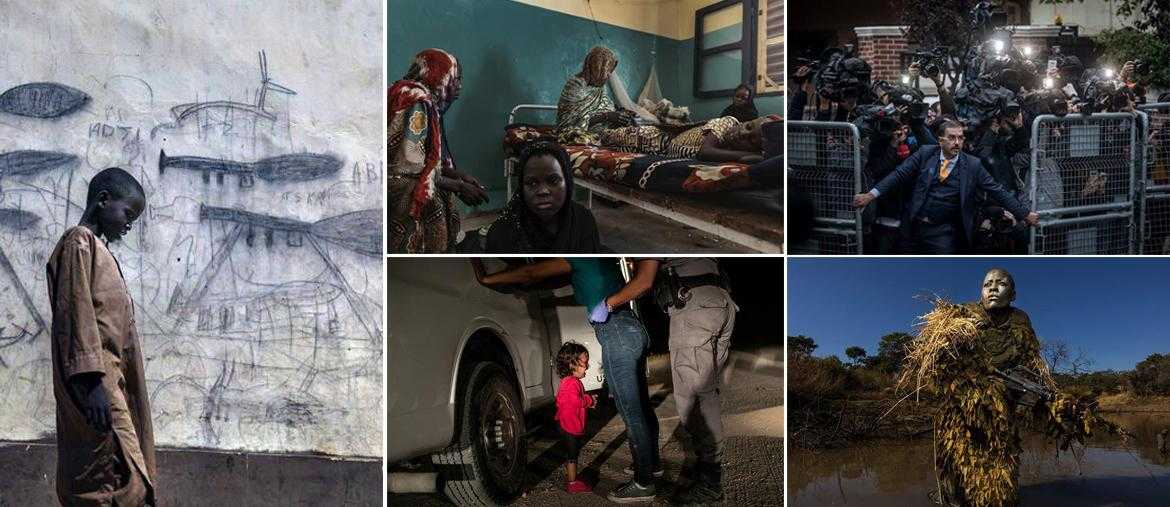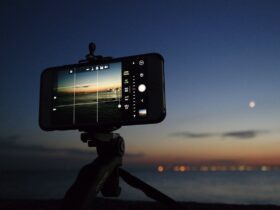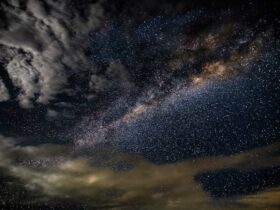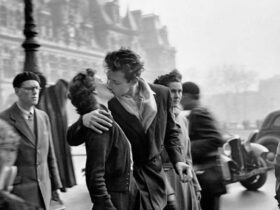The winners of the World Press Photo 2019, one of the most important and authoritative photography competitions in the world, have been announced. Year after year the World Press Photo rewards the shots that best described the fundamental events of the year and we will try to understand why these images have been so effective in telling their stories.
The winners of the World Press Photo are certainly the best photographers in the world. Winning the most prestigious award dedicated to photo-journalism means achieving the state of the art for a photography professional. To win the World Press Photo it is not enough to know how to take a well exposed image that follows the rules of good composition, it is instead necessary toto extract from an event that single moment that condenses the meaning of an entire event. A single image having the strength to tell an entire story that has marked the history of man.
The archive of the winners of this prestigious competition then becomes an insight into human history, summarizes all the fundamental facts of past decades. Impressed in the images we find jubilants of joy, screams of pain, death, blood, life and revenge. A great book of human history without written words, where a new chapter is written from year to year, blocking an imperceptible moment forever. Understanding how these shots were made and why not only will it help us grow as photographers, but it will allow us to learn more about the world around us and to evaluate in what direction man’s adventures are evolving.

World Press Photo: the stories of the winners
It is important to understand how important it is, especially in photojournalism, thethe ability to convey a story to the viewer. In other photographic genres we can also overshadow this aspect, focusing on the geometry of the shot, on the visual impact, on the model’s breast. Seriously, to truly understand the images we are going to analyze shortly, we must also move away from the classic and objective canons of evaluation of a shot and put ourselves in the shoes of the journalist. A photojournalist must be able to capture the most significant moment of an entire story that can stretch out for days. A single click to tell us everything that is most relevant to one of the most important events of the year. This must be done by the winners of the World Press Photo.
We will only examine the individual winning shots of the various categories for reasons of space, however on the official website of the World Press Photo you can find all the finalist shots and also the photographic projects, which unfortunately we do not have the space to present in this article, but represent a key part of the competition. Take a look because there is really a lot to see and appreciate, especially after reading the next lines that we propose.
World Press Photo of the Year
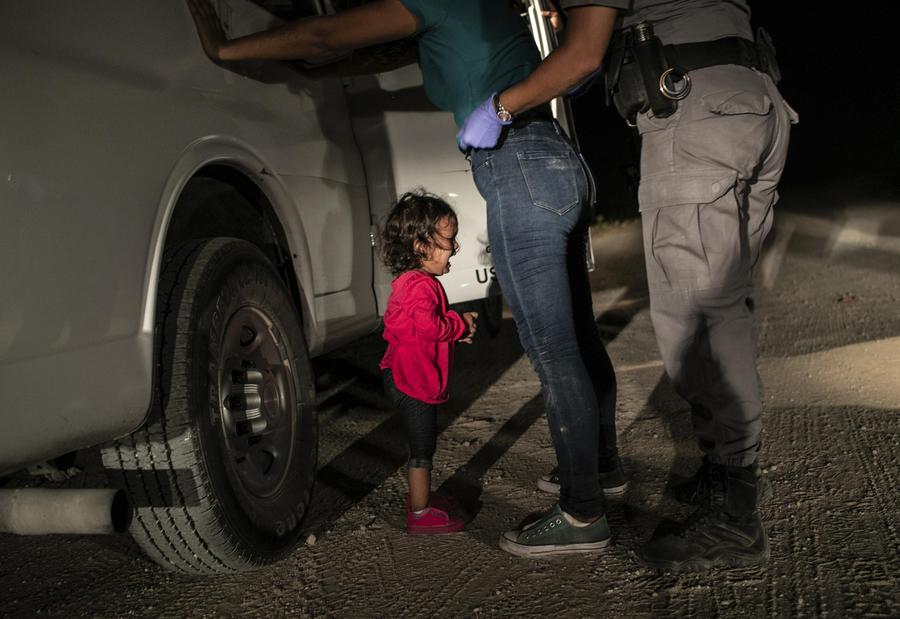
This image released by the World Press Photo Foundation on Thursday 11 April 2019, taken by John Moore, Getty Images, who won the World Press Photo of the Year and the first prize in the Spot News, Singles category, titled “Crying Girl on the Border” , shows little Honduran Yanela Sanchez crying as she and her mother, Sandra Sanchez, are taken into custody by US border officials in McAllen, Texas, USA on June 12, 2018. (John Moore, Getty Images, World Press Photo Foundation)
The immigrant families crossed the Rio Grande from Mexico and were then detained by US authorities. Sandra Sanchez said she and her daughter traveled through Central America and Mexico for a month before reaching the United States to seek asylum. The Trump administration had announced a “zero tolerance” policy at the border under which immigrants captured in the United States could be prosecuted. As a result, many arrested parents were separated from their children, often sent to different detention facilities. After this photo was published around the world, US Customs and Border Protection confirmed that Yanela and her mother were not among the thousands of families separated by US officials. However, public outcry over the controversial practice led President Donald Trump to reverse the policy starting June 20.
A little girl’s greatest fear is not leaving her country to go in search of a better life that she may never find. A little girl is only afraid of being separated from her mother. Although she is too young to understand what is happening, she realizes that her mother is in danger. Little Yanela’s tears take on all the sufferings suffered by migrants on the border with the United States and are awarded the highest honor of the competition: the World Press Photo of the Year.
The scene she is dominated by the crying girl. This is because all the other faces have been cut, leaving only severed busts that contextualize the shot. Adults are treated the same as numb mannequins, all the feelings are concentrated in the cry of the child. The composition does not follow the canon rules very much, there is only a vague hint of the use of parallel lines in sequence to give regularity to the shot. However, among the dark and dull tones of the scene emerge two chromatic details. The first is Yanela’s red dress which looks like it was taken directly from Steven Spielberg’s “Schindler’s List”. The second are instead the intense blue gloves of the policeman. They guide the gaze towards the two key concepts of the narrative: the child’s pain and its cause, or the fear for the fate of the mother who was searched by the police. A simple and little thought probably shot, but for this direct and true. The scene does not seem constructed, but imbued with a sad reality which shows one of the most tragic pages in human history.
World Press Photo – Ambiente
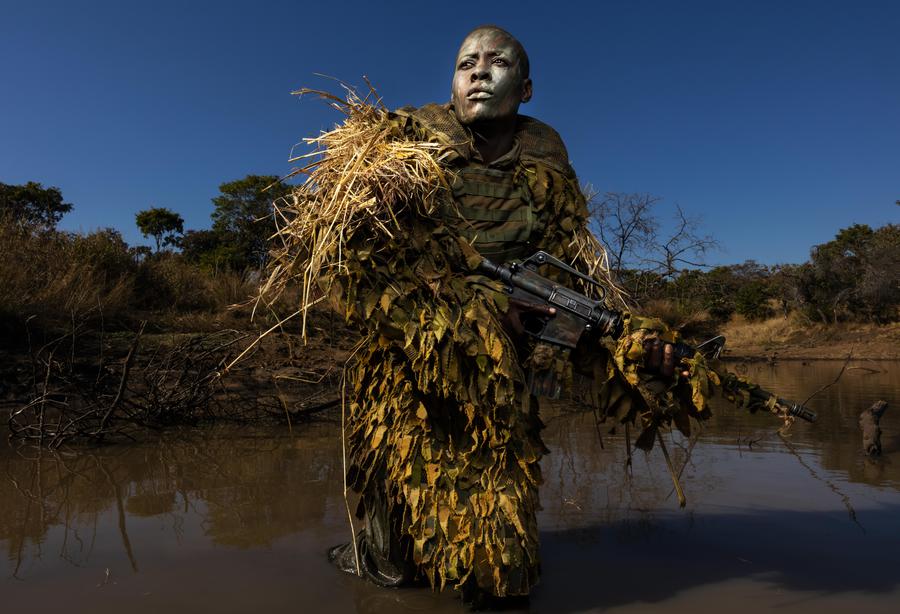
In this image published by the World Press Photo Foundation on Thursday, April 11, 2019, titled “Akashinga – the Brave Ones” by Brent Stirton, Getty Images, which won the first prize in the category Environment, Singles, shows Petronella Chigumbura (30), a member of an all-female anti-poaching unit called Akashinga, participating in a camouflage drill in Phundundu Wildlife Park, Zimbabwe (Brent Stirton, Getty Images, World Press Photo)
Akashinga (‘The Brave Ones’) is a forest guard militia established as an alternative model of conservation. It aims to work with, rather than against, local people for the long-term benefits of their communities and the environment. Akashinga includes women from disadvantaged backgrounds who empower them, offer jobs and help local populations directly benefit from wildlife conservation. Other strategies, such as using trophy hunting taxes to finance conservation, have been criticized for imposing solutions from the outside and excluding the needs of local populations.
In this we see portrayed two of the greatest modern battles: the one for women’s rights, the second for the protection of the environment and the ecosystem. In an Africa tormented by poaching and practices reserved for women, this image represents the exception that should be an example to the whole world. The proud look of this woman soldier demonstrates all her motivation in carrying out her work, a double motivation: to demonstrate her strength as a woman and to protect one of the few ecosystems that are still almost totally wild.
From the compositional point it can be seen the division of the frame into four equal rectangles thanks to the perpendicular lines created by the horizon and the subject that meet exactly in the center of the image. The perpendicularity and regularity give a strong feeling of stability and great consistency when clicked. The composition is also exploited to convey the subject’s solid and imperturbable strength during a hard exercise. The connection with nature is also accentuated by the vivid colors of the shot. The vivid blue and the various shades of green and very saturated brown drag us under the clear sky of an open and wild savannah. Two great battles merged into one, the shot conveys this need to fight through the gaze and the unlined shotgun ready for use. But after all, nature has always been considered a woman. Precisely for this reason it is a great demonstration of photographic storytelling.
World Press Photo – Contemporary Issues
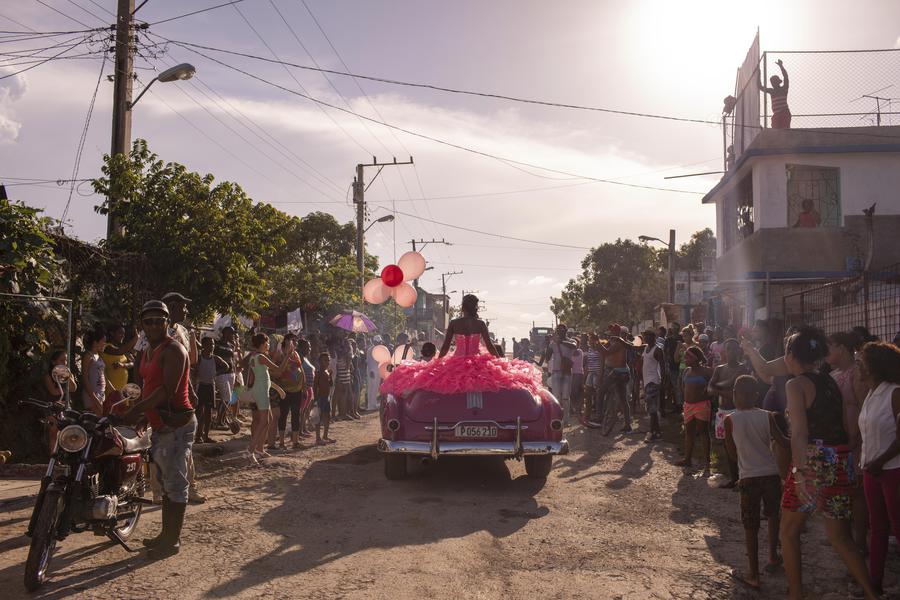
In this image published by the World Press Photo Foundation on Thursday 11 April 2019, titled “Cubanitas” by Diana Markosian, Magnum Photos, who won the first prize in the Contemporary Issues series, Singles, Pura crosses her neighborhood in a pink convertible from the ‘ 50, as the community gathers to celebrate its 15th birthday, in Havana, Cuba. (Diana Markosian, Magnum Photos, World Press Photo)
A girl’s quinceañera (fifteenth birthday) is a training Latin tradition that marks the transition to femininity. It’s a gender-specific rite of passage, traditionally showing a girl’s purity and readiness to marry. Families incur enormous expenses, often celebrating with a lavish party. The girl dresses as a princess, experiencing an idea of fantasy and perception of femininity. In Cuba, the tradition has turned into a performance involving photo and video shoots, often documented in a photo book. Pura’s quinceañera had a special influence, as a few years earlier, when she was diagnosed with a brain tumor, she was told she would not live beyond 13 years.
Holidays are part of man’s life. These are unique days of their kind that we feel we have to make special. The common denominator of the holidays is generally happiness, euphoria, the desire to be together and very often ostentation. During an important party we always want to show ourselves as best we can. Throughout history, different ways of showing ourselves off during important events in our lives have developed in every place in the world. Don’t get it wrong: sometimes this can be overwhelmingly beautiful. The celebrations for entering adulthood take on particular importance in the life of an individual. Especially if he was not to survive beyond adolescence. These glitzy and over-the-top celebrations then take on the meaning of the fight against disease and the triumph of life.
They are immediately noticeable in the composition the diagonal lines that converge towards the main subject, or the car that transports the girl. The use of converging diagonal lines is one of the most popular methods of directing attention to a point of interest. A lot of architectural, natural or landscape elements are used …






